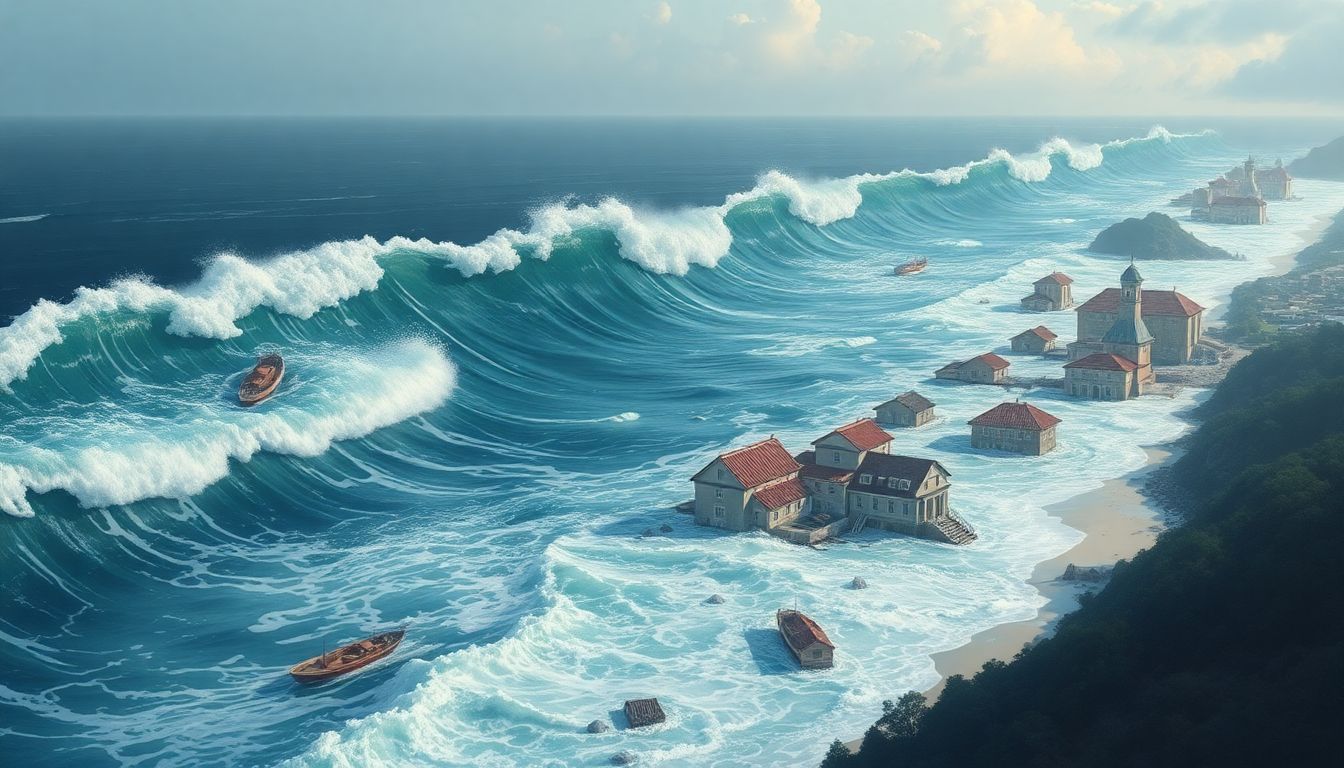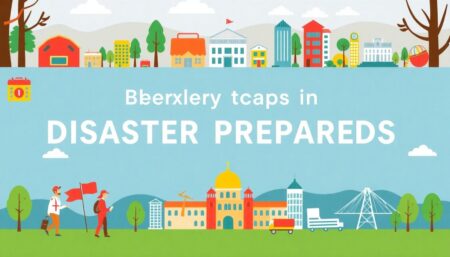The 2004 Indian Ocean tsunami was a catastrophic event that forever changed the landscape of disaster risk management. This article explores the lessons learned, the global response, and the ongoing efforts to build a more resilient future.
Reflections from SRSG Kamal Kishore – United Nations Office for Disaster Risk Reduction
Imagine the vast Indian Ocean, normally a source of life and sustenance, suddenly transformed into a beast of destruction. On December 26, 2004, a colossal underwater earthquake off the coast of Sumatra triggered a series of tsunamis that swept across the ocean, leaving a trail of devastation in its wake. The waves, towering up to 30 meters high, crashed into the coastlines of 14 countries, from Indonesia to Somalia, claiming over 230,000 lives and displacing millions more.
In the aftermath, the global community swiftly united in an unprecedented show of solidarity. Governments, international organizations, and NGOs mobilized resources, deploying emergency response teams, medical aid, food, and water supplies. The United Nations launched a massive humanitarian effort, establishing the largest relief operation in its history. Countries worldwide opened their hearts and wallets, donating billions of dollars in aid to support the recovery efforts.
The 2004 Indian Ocean tsunami left an indelible mark on the affected regions and the world. It highlighted the critical need for a robust early warning system, leading to the establishment of the Indian Ocean Tsunami Warning and Mitigation System. The international cooperation that followed the disaster set a powerful precedent for global unity in the face of adversity, serving as a beacon of hope for future collective responses to natural disasters.

The Devastating Impact
In the stark morning light of December 26, 2004, the world awoke to the horrifying news of a colossal tsunami sweeping through the Indian Ocean. The immediate aftermath was nothing short of cataclysmic. Waves as high as 30 feet tall engulfed coastal communities across Indonesia, Sri Lanka, India, Thailand, and even reached as far as East Africa. The scale of destruction was unimaginable. Entire villages were washed away, leaving behind a eerie silence where once there was life and vibrancy. Beaches that were bustling with tourists just hours before were transformed into graveyards of debris. The tsunami claimed over 230,000 lives, displaced millions, and left countless more injured or missing.
The devastation was so vast that it was impossible for any single nation to handle the crisis alone. The global response was swift and unprecedented. For the first time in history, the world witnessed a truly collective humanitarian effort. Governments, non-governmental organizations (NGOs), and individuals from all corners of the globe mobilized to provide aid and support. Planes filled with food, water, medicine, and other essential supplies began landing in the affected regions within hours. The United Nations led the international response, coordinating relief efforts through its various agencies.
The outpouring of support was not just limited to governments and organizations. Ordinary people around the world were moved by the sheer magnitude of the tragedy and felt compelled to contribute in any way they could. Fundraising events, charity drives, and volunteer efforts sprang up spontaneously. Children donated their pocket money, schools held bake sales, and communities organized benefit concerts. This groundswell of generosity cut across borders, cultures, and religions, serving as a poignant reminder of our shared humanity.
However, the challenges of delivering aid were immense. Some of the hardest-hit areas were also the most remote and inaccessible. Infrastructure had been obliterated, making it difficult to get supplies and personnel to where they were needed most. Helicopters had to be used to reach isolated communities, while makeshift clinics were set up in schools and temples. Despite these obstacles, the global response remained steadfast. The world had witnessed one of the deadliest natural disasters in recorded history, and it responded with an equally profound display of compassion and solidarity. The 2004 Indian Ocean tsunami would forever be etched in memory as a testament to both nature’s destructive power and humanity’s capacity for unity and resilience.

Global Cooperation and Early Warning Systems
The devastating tsunami of December 2004, triggered by a massive earthquake off the coast of Sumatra, Indonesia, underscored the urgent need for a robust warning system in the Indian Ocean. The colossal waves claimed over 230,000 lives across multiple countries, leaving the world stunned and heartbroken. In response to this catastrophic event, the international community sprang into action, demonstrating an unprecedented level of cooperation to prevent such a tragedy from reoccurring. Under the aegis of the United Nations Educational, Scientific and Cultural Organization (UNESCO), the Indian Ocean Tsunami Warning System (IOTWS) was established, a testament to the power of global collaboration.
The establishment of the IOTWS involved a multitude of nations, international organizations, and scientific institutions working together towards a common goal. Australia, Germany, India, Indonesia, and Thailand were among the key players in the initial setup. The system was designed to comprise several critical components: seismographic networks to detect earthquakes, sea-level gauges to monitor changes in ocean levels, and buoys equipped with sensors to transmit real-time data. Additionally, a sophisticated communications infrastructure was put in place to ensure timely dissemination of alerts to member states. This cooperative effort not only resulted in the rapid development of the system but also fostered a spirit of shared responsibility and mutual support among the participating countries.
Since its inception, the IOTWS has been a dynamic and evolving entity, with continuous efforts to maintain and enhance its capabilities. Ongoing initiatives include:
- Expansion of the observation network to cover more areas and improve data accuracy.
- Integration of advanced technologies such as satellite altimetry and GPS for better monitoring.
- Regular drills and exercises to evaluate and enhance the response mechanisms of member states.
- Community awareness and education programs to ensure that local populations are well-informed and prepared.
These efforts are coordinated through regional and international workshops, conferences, and training sessions, ensuring that best practices are shared, and lessons learned are incorporated into the system’s operation.
The IOTWS stands as a shining example of international cooperation in disaster risk reduction. Its success is a testament to the commitment and dedication of numerous stakeholders who continue to work tirelessly to safeguard the lives of millions in the Indian Ocean region. As the system continues to evolve, it serves as a model for other regions seeking to establish similar warning systems. Moreover, it highlights the importance of sustained cooperation, technological advancement, and community engagement in mitigating the impact of natural disasters. Through the IOTWS, the international community has shown that by working together, we can build a safer, more resilient world.

Empowering Communities through Education
Imagine the earth trembling beneath your feet, or a wall of water rushing towards your home. Disasters can strike at any moment, and when they do, knowledge is our first line of defense. This is why disaster education is not just an option, but a necessity. For children, especially, it can make all the difference.
Children spend a significant portion of their day in schools, and it is here that they can be equipped with lifesaving skills. Disaster education teaches them what to do before, during, and after a disaster. It empowers them to protect themselves and others. It helps them understand the warning signs, the safe spots, and the emergency plans. But more than that, it gives them the confidence to act.
Consider the story of Tilly Smith, a 10-year-old British girl who was on vacation in Thailand when the 2004 Indian Ocean tsunami struck. She had learned about tsunamis in her geography class and recognized the warning signs when she saw the beach receding. Her knowledge saved not only her life but also the lives of her family and many others on the beach that day. This is the power of disaster education.
Let’s look at a few more examples:
- In Japan, school children practice earthquake drills regularly. In 2011, when a massive earthquake and tsunami hit, these drills paid off. Children automatically took cover and followed evacuation procedures, minimizing casualties.
- During a wildfire in California, a group of children at a summer camp remembered their fire safety lessons. They stayed low to the ground, covered their mouths, and followed their counselors to safety.
These stories are testament to the fact that disaster education saves lives. It is an investment in our future, and one that we must prioritize.

Building a Resilient Future
Imagine a world where communities not only bounce back from disasters but thrive in their aftermath. This is the promise of a holistic approach to disaster resilience. Unlike traditional methods that focus solely on infrastructure and emergency response, a holistic approach casts a wider net, incorporating natural ecosystems, social structures, and governance. By intertwining these elements, communities can better withstand and recover from disasters.
Natural ecosystems play a critical role in this holistic approach. They act as first lines of defense against disasters. For instance,
- Mangroves absorb storm surge impacts, minimizing coastal erosion and flooding.
- Wetlands soak up excess rainwater, reducing flood risks.
- Forests prevent landslides by stabilizing soils and regulating water flow.
These ecosystems are not just protective barriers; they also provide essential services like water purification, carbon sequestration, and habitat provision, which support community well-being and economic stability.
However, the power of nature alone is not enough to build disaster resilience. Effective governance is the backbone of a holistic approach. Strong governance ensures that policies, plans, and decisions are made with disaster risk in mind. It promotes
- community engagement and awareness,
- robust early warning systems,
- transparent communication,
- and adequate infrastructure investment.
Moreover, it encourages collaboration among local, regional, and national stakeholders, fostering a collective commitment to resilience.
To truly embrace a holistic approach, we must weave disaster resilience into every fiber of our communities. This means
- incorporating resilience into school curriculums,
- promoting public-private partnerships,
- and integrating disaster risk reduction into all sectors, from housing to healthcare.
By doing so, we create a culture of resilience where every individual understands their role in preparing for, responding to, and recovering from disasters. This collective effort, combined with the strength of natural ecosystems and robust governance, can transform our communities into resilient havens, ready to face and grow from any challenge.
FAQ
What was the impact of the 2004 Indian Ocean tsunami?
How did the global community respond to the tsunami?
What is the significance of World Tsunami Awareness Day?
How can disaster education empower communities?
What steps can be taken to build a more resilient future?
- Invest in early warning systems and disaster education.
- Promote a holistic approach to resilience, including better livelihoods and cohesive societies.
- Protect natural ecosystems like mangroves.
- Establish strong disaster governance.









